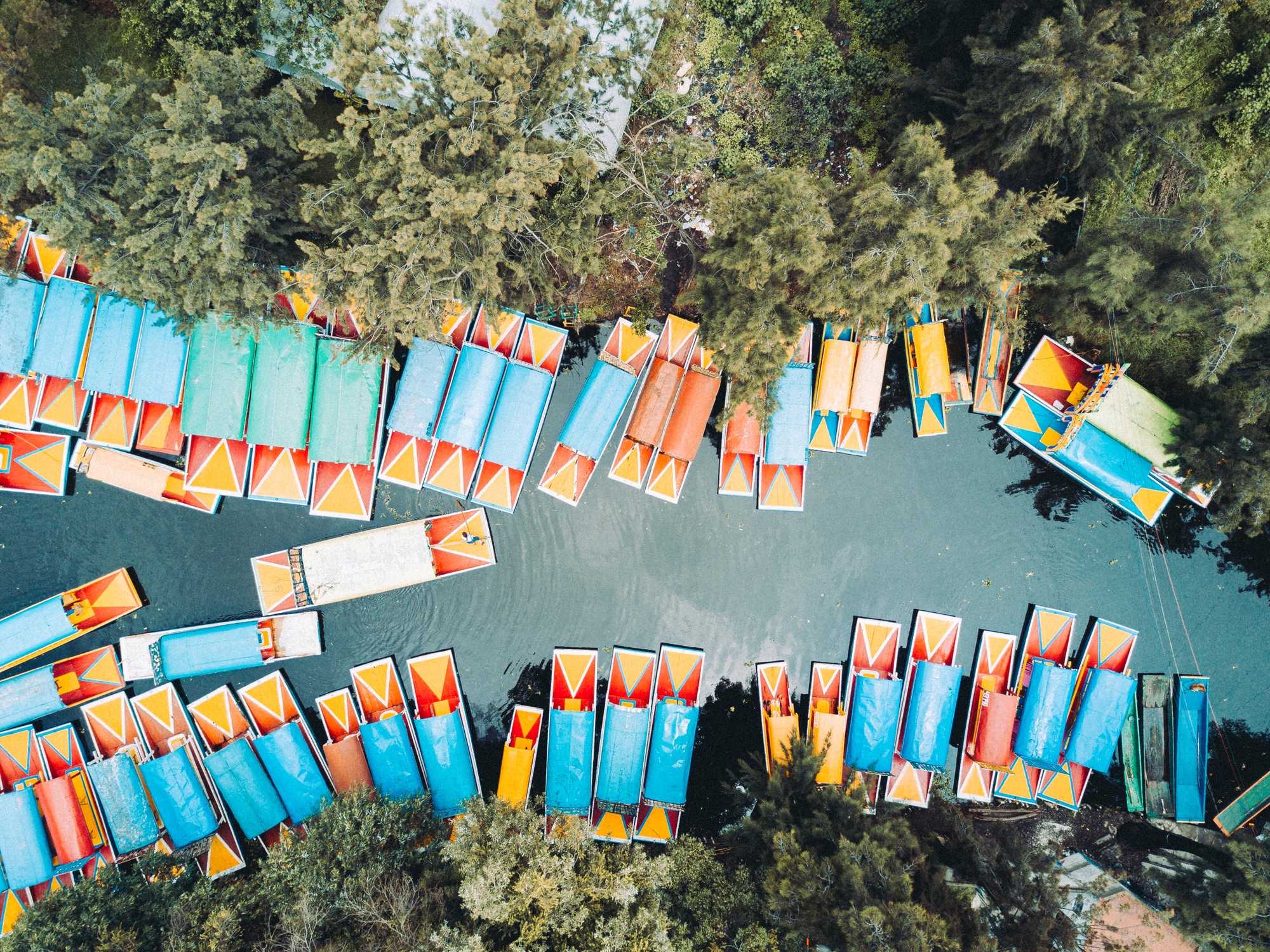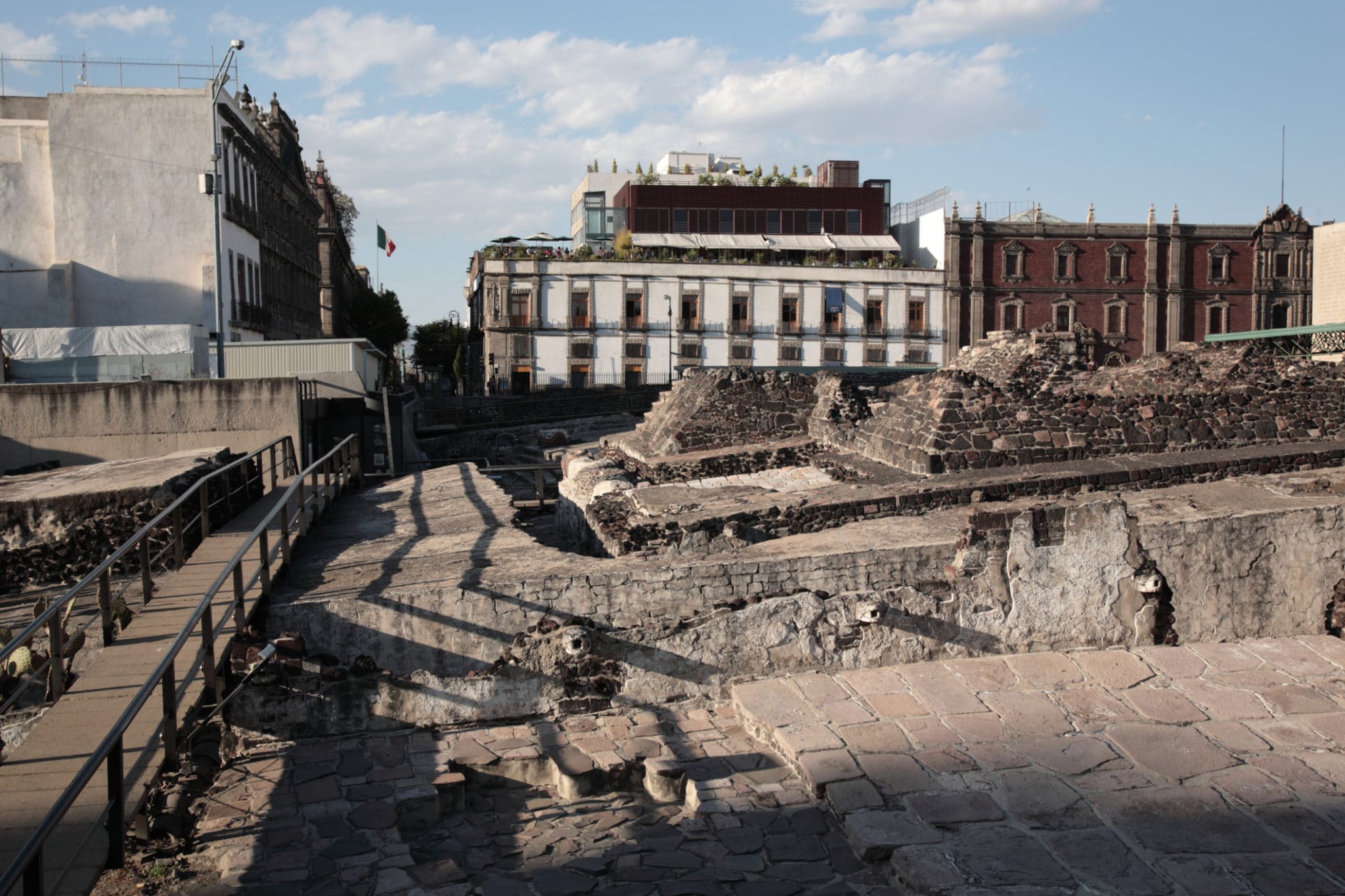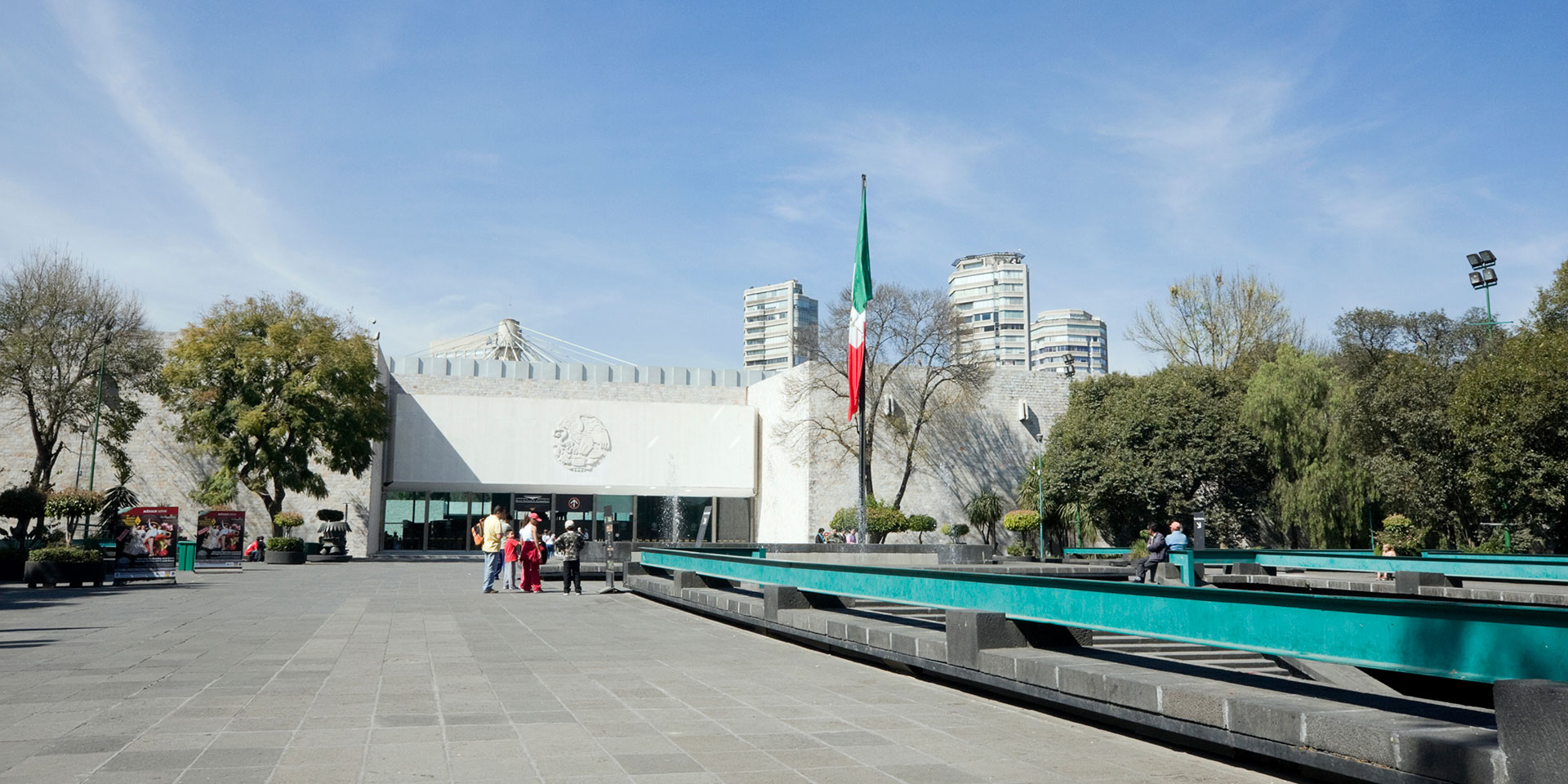Many people who visit Mexico City come not just for the bustling modern metropolis that it is now, but for the city’s rich, ancient cultural history. While the Mexica (Aztec) people founded the city of Tenochtitlán in 1325, the region has been inhabited by various indigenous groups for 10,000 years or more. That’s a lot of history!
How do you wrap your mind around it all? Start by visiting these important archaeological sites.
Glide Through Ancient Canal

Mexico City is built on a lakebed, which might not surprise you if you’ve ever been caught there in a rainstorm! The valley was once a series of connected lakes and marshlands, which you can still see if you visit Xochimilco and enjoy a boat ride through the canals and floating gardens. Around these lakes stood ancient cities, many of which you can still visit today.
Climb the Temple to the Sun
Perhaps the most famous site is also the furthest away. To get to Teotihuacán, you’ll need to travel to the Terminal Central del Norte for buses that head out of town to the site. (Alternately, you can take a taxi, though this option is more expensive.)
This massive ancient city, probably founded around 100 B.C., was already in ruins when the Mexica people arrived, and there is little agreement about who built it. Because it’s the most famous site, it’s also the busiest, so expect a line to climb the narrows steps to the top of the Temple of the Sun.
See the Tower of Skulls

The easiest archeological site to visit inside the city is Templo Mayor, the heart of the Tenochtitlán empire. You might miss it if you aren’t looking for it, tucked into the Zócalo behind the Metropolitan Cathedral and the National Palace, but it is definitely worth seeing.
Thorough excavation has unearthed five different levels of construction in the ritual center, which grew throughout the generations that ruled the city. The museum at the site houses an incredible number of items, and excavation continues to this day. In 2017, archaeologists uncovered a massive tower of human skulls.
Enter the Forest
There are more than a dozen other active archeological sites in various states of excavation that you can reach on the metro or by bus from downtown. Just take a peek at the Google Map for “zona arqueológica” to see the sites that surround the city on all sides.
The Centro Histórico is full of buildings constructed with the remnants of temples and other pre-Hispanic stone carvings, dismantled and destroyed during colonization. You can even find archeological pieces on display in metro stations.
In the Forest of Chapultepec, a 686-hectare park that has provided a natural respite since pre-Hispanic times, you will find the baths of Moctezuma. This small archeological site was once an area of interconnected freshwater pools, rivers and waterfalls designed for the leisurely aquatic recreation of Aztec nobility.
While you’re in Chapultepec, visit the National Museum of Anthropology, which has 22 main rooms, as well as one or two temporary exhibits, thoroughly examining Mexican cultural history from prehistoric to near modern times.
Get up above it All
For a truly unique experience of Mexico City, take the trip to Cerro de la Estrella. In the southeastern area of CDMX, between downtown and Xochimilco, the site has a small museum, and the park is quiet and clean, full of green trees, singing birds, joggers and families enjoying a hike to the summit. Stick to the paved path for the easiest climb, or hire a guide to show you some of the smaller pathways and hidden caves that mark the hillsides.
At the top of this hill is a temple where for generations the priesthood enacted the New Fire Ritual. Every 52 years, when the 260-day sacred calendar lined up with the 365-day civic calendar, every fire in the surrounding cities would be extinguished. Worshippers would walk to the hilltop in complete darkness, and the new fire was lit.
Definitely take the trip all the way to the top of the temple stairs, where you will have a complete 360-degree view of the city 224 meters below, spread out in every direction.




